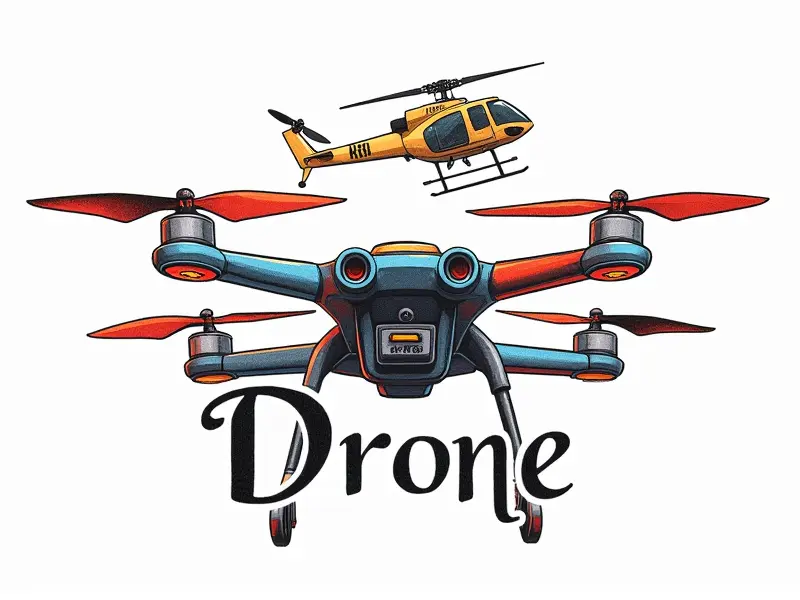How to build an FPV racer?

Build Your First FPV Racer Today!
Welcome to the exhilarating world of FPV (First Person View) racing drones! Building your first FPV racer is a thrilling adventure that combines technology, creativity, and adrenaline. Whether you're a seasoned RC enthusiast or just starting out, this guide will walk you through every step of the process.
Step-by-Step Guide to FPV Racing Drones
The journey to building your own FPV racer begins with understanding the components involved:
- Flying Frame: The frame is the backbone of your drone. Choose a lightweight and durable material like carbon fiber.
- Motors & Propellers: High-performance motors paired with propellers are crucial for speed and agility.
- Battery: A high-capacity LiPo battery ensures long flight times and sustained power.
- Flight Controller: This brain of the drone manages stability, control, and performance.
- ESC (Electronic Speed Controllers): Controls motor speed based on input from the flight controller.
- Radio Transmitter & Receiver: Connects your transmitter to the drone for remote control.
- Camera & Video Transmitter: Provides real-time video feed, essential for FPV racing.
DIY FPV Racer in Under 30 Minutes
If you're short on time but eager to get started, here's a quick guide to assembling your first FPV racer:
- Frame Assembly: Start by mounting the motors and ESCs onto the frame.
- Motor & Propeller Installation: Attach high-performance motors and propellers.
- Battery Connection: Securely connect your LiPo battery to the power distribution board (PDB).
- Flight Controller Setup: Install the flight controller and calibrate it for optimal performance.
- Radio Transmitter & Receiver Integration: Pair your transmitter with the receiver.
- Camera & Video Transmitter Installation: Mount the camera and video transmitter for FPV viewing.
Beginner's Guide to Building FPV Racers
For beginners, understanding the basics is key. Here’s a comprehensive guide to get you started:
- Choose Your Frame: Select a frame that suits your skill level and racing needs.
- Select Components: Opt for high-quality motors, ESCs, and other essential parts.
- Assemble the Drone: Follow step-by-step instructions to ensure proper assembly.
- Calibrate Your Gear: Calibrate your flight controller and radio system for optimal performance.
- Test Flight: Conduct a test flight in a safe environment before hitting the race track.
Master the Art of FPV Drone Assembly
Mastery comes with practice. Here are advanced tips to refine your FPV racer building skills:
- Tuning Flight Controller Settings: Fine-tune parameters for better stability and responsiveness.
- Optimizing Propellers & Motors: Choose the right propeller size and motor type for optimal performance.
- Battery Management: Proper battery care ensures longevity and peak performance.
- Camera Setup: Adjust camera settings for clear, lag-free video transmission.
Quick Start: Build an FPV Racer Now
If you're ready to dive right in, follow these quick steps:
- Gather all necessary components and tools.
- Mount the frame and motors securely.
- Connect ESCs and flight controller.
- Battery installation and power distribution setup.
- Radio transmitter & receiver pairing.
- Camera and video transmitter mounting.
The Ultimate FPV Racer Construction Kit
To streamline the building process, consider purchasing a complete construction kit:
- Pre-assembled Frame: Saves time and ensures proper alignment.
- Bundled Components: Includes all necessary parts for easy assembly.
- Detailed Instructions: Step-by-step guide to ensure accurate setup.
Easy Steps for Your First FPV Racing Drone
Building your first FPV racing drone is easier than you think. Follow these simple steps:
- Select a suitable frame and components.
- Assemble the frame with motors, ESCs, and flight controller.
- Connect battery and power distribution board.
- Pair radio transmitter & receiver.
- Mount camera and video transmitter for FPV viewing.
Step-by-Step FPV Racer Building Guide
A detailed guide to building your FPV racer:
- Select Components: Choose high-quality motors, ESCs, battery, and other essentials.
- Frame Assembly: Mount frame securely with motors and ESCs.
- Flight Controller Installation: Install flight controller and calibrate settings.
- Battery Connection: Connect LiPo battery to power distribution board (PDB).
- Radio System Setup: Pair transmitter & receiver for remote control.
- Camera & Video Transmitter Integration: Mount camera and video transmitter for FPV viewing.
To build an ultimate FPV racer, follow these advanced steps:
- Select High-Performance Components: Choose top-tier motors, ESCs, and other parts for superior performance.
- Tune Flight Controller Settings: Optimize parameters for maximum stability and responsiveness.
- Battery Management: Implement advanced battery management techniques to extend flight time.
- Camera Setup: Fine-tune camera settings for clear, lag-free video transmission.
Conclusion
Building an FPV racer is a rewarding endeavor that combines technical skill and creative flair. By following the steps outlined in this guide, you'll be well on your way to mastering the art of FPV drone assembly. Whether you're building for fun or competition, the thrill of flying your own custom-built racer is unparalleled. Happy racing!

